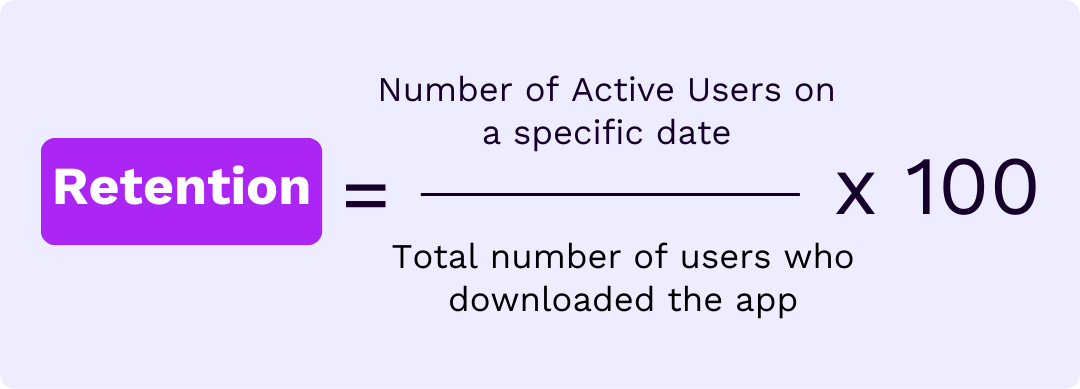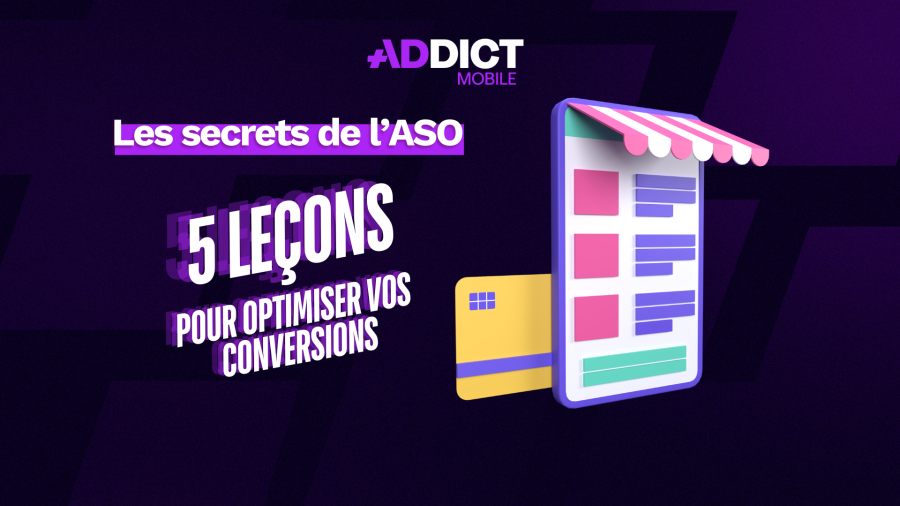Retention Rate in App Marketing: Definition, Calculation, and Strategies to Improve It
Introduction
The retention rate is a key indicator in mobile marketing that measures user loyalty to an app. A high retention rate means the app successfully keeps its users over the long term, which is essential for its profitability and growth.
In an extremely competitive app market, user retention is a major challenge. Companies must not only attract users but also ensure they stay engaged and active on their platform. Understanding how to optimize this rate can make the difference between a successful app and a commercial failure.
Qu’est-ce que le taux de rétention ?
Definition
The retention rate measures the percentage of users who return to use an app after a given period. It is typically calculated at different milestones (day 1, day 7, day 30) to evaluate short-, medium-, and long-term engagement.
The higher the rate, the more useful and engaging the app is considered to be. A low retention rate may indicate a problem with perceived value, user experience, or relevance to the target audience.

Calculation Method
The retention rate is calculated using the following formula:

Example:
- A high day 1 retention rate indicates effective onboarding and a strong first-time user experience.
- If 1,000 users install an app and 400 are still active after 7 days, the day 7 retention rate is 40%.
- The day 30 retention rate assesses whether the app has succeeded in creating a habit for the user.
Retention tracking should be cross-referenced with other indicators to understand the underlying causes of user engagement or drop-off.
Key Figures
Average retention rate by app category (after 30 days):

Sources: Business of Apps & Statista
What Are the Complementary KPIs to Track?
- Churn rate: The inverse of the retention rate, it measures user loss.
- Average time spent on the app: Evaluates user engagement.
- Number of sessions per user: Shows how frequently the app is being used.
- Activation rate: Measures how many users perform a key action post-installation.
- Lifetime value (LTV): Predicts the long-term financial value of a user.
Why Is Retention Rate Important in App Marketing?
Assessing product-market fit
A strong retention rate indicates that the app meets user expectations and provides real value. Conversely, a low rate may reveal a mismatch with user needs.
If users install the app but quickly abandon it, it may point to issues with marketing targeting, app positioning, or inadequate features.
Understanding churn reasons
Churn refers to users who abandon the app. Analyzing retention helps identify why some users leave and where improvements are needed.
Common churn reasons include:
- A frustrating or complex user experience
- Lack of engaging content or features
- Poorly structured or lengthy onboarding
- Intrusive or irrelevant notifications
- Outdated app lacking updates or innovation
Improving customer/user experience
High retention often stems from a smooth and engaging user experience. Optimizing design, usability, and value proposition enhances loyalty.
Key UX levers include:
- An intuitive design and smooth navigation
- A streamlined signup process
- Interactive tutorials to guide users from day one
- Responsive and accessible customer support
Evaluating campaign effectiveness
The retention rate helps gauge the quality of acquisition campaigns. Massive installs with poor retention may indicate targeting issues or misleading advertising.
If many users uninstall shortly after installing, it could mean the app doesn’t deliver on the promises made in ads.
Forecasting revenue based on user behavior
Analyzing retention trends can help predict future revenue, particularly for subscription-based apps, in-app purchases, or ad monetization.
Higher retention is directly correlated with better monetization. Loyal users are more likely to make purchases, engage with ads, and refer others.
Challenges in Maintaining High Retention
- Market saturation: Users are constantly solicited by new apps, making loyalty difficult.
- Rising competition: If a competitor offers a better experience, users might switch.
- Initial engagement: Poor onboarding can cause early drop-off.
- User expectations: Apps must continuously evolve to meet shifting demands and trends.
- Technical issues: Bugs, crashes, or slow loading times negatively impact retention.
What Strategies Can Improve Retention Rate?
- Collect user feedback and conduct satisfaction surveys: Helps identify improvement areas and align with market needs.
- Track the user journey to spot blockers: Behavioral analysis reveals friction points and improves the overall UX.
- Optimize ASO (App Store Optimization): Ensures qualified downloads, increasing chances of long-term engagement.

To go further, find out how to boost your conversions with ASO!
- Launch loyalty programs: Points, exclusive perks, or rewards motivate users to keep returning.
- Deploy re-engagement campaigns: Push notifications, personalized emails, and targeted offers re-activate inactive users.

Do not hesitate to contact with our teams
Addict can support you to improve your performance.
Conclusion
Retention rate is a vital metric for evaluating a mobile app’s performance. By understanding its drivers and implementing the right strategies, it’s possible to improve user loyalty and ultimately enhance app profitability. Regular monitoring and ongoing optimization are essential to maximizing retention and ensuring sustainable growth.


